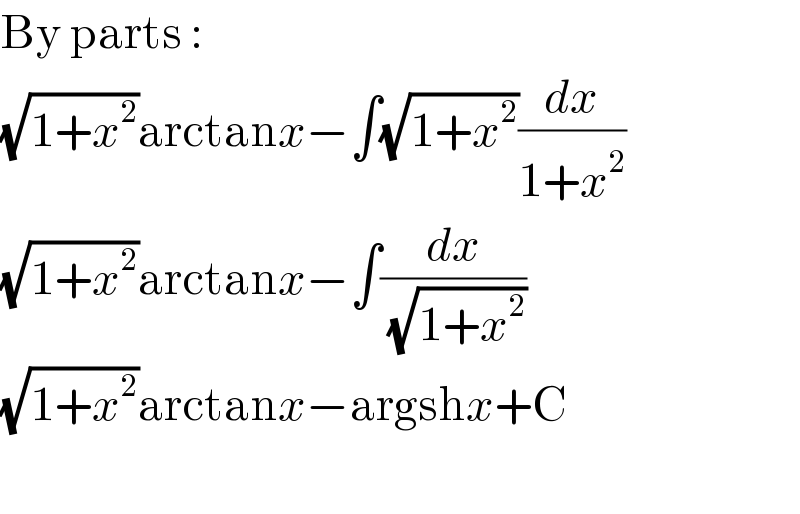
Question and Answers Forum
Question Number 104104 by bemath last updated on 19/Jul/20

Answered by OlafThorendsen last updated on 19/Jul/20

Answered by Dwaipayan Shikari last updated on 19/Jul/20

Answered by bobhans last updated on 19/Jul/20
![∫ tan^(−1) (x) d((√(1+x^2 ))) = (√(1+x^2 )) tan^(−1) (x)−∫ ((√(1+x^2 ))/(1+x^2 )) dx = (√(1+x^2 )) tan^(−1) (x)−∫ (dx/(√(1+x^2 ))) let I_1 = ∫ (dx/(√(1+x^2 ))) [ x = tan p ] I_1 = ∫ ((sec^2 p)/(sec p)) dp = ∫ sec p dp I_1 = ln ∣sec p + tan p ∣ + c ∴ I = (√(1+x^2 )) tan^(−1) (x)−ln ∣(√(1+x^2 )) +x∣ + c](Q104109.png)
Answered by mathmax by abdo last updated on 19/Jul/20

